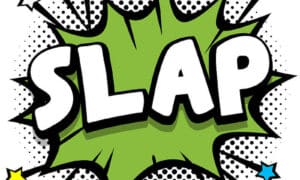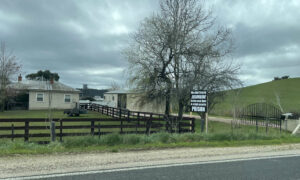Post-construction peer-reviewed economic analyses of new stadiums and sporting teams unequivocally demonstrate that the Macquarie Point stadium would just be an exorbitantly expensive way to relocate economic activity from elsewhere in Hobart and Tasmania to within 1-2 km of Macquarie Point, without generating any discernible net new economic activity or permanent jobs for the state.
The economic narrative being advanced by the advocates of the Macquarie Point stadium or ‘stadium boosters’ as they are called, is embellished with superlatives like ‘once in a generation’, ‘game changer’ and ‘economic powerhouse’. Unfortunately, rather than being the promised ‘economic powerhouse’, peer-reviewed economic analysis of countless new stadiums and new sporting teams post construction indicates that nothing could be further from the truth:
A stadium at Macquarie Point and a new AFL team could even result in a net decrease in economic activity across greater Hobart and Tasmania.
Why?
Firstly, no-one, and certainly not the AFL are arguing that the commercial feasibility of the Macquarie Point stadium is anything but a total basket case. Otherwise the AFL would not be asking taxpayers to fork out the vast majority of not just the capital costs, but, extraordinarily, the operating costs as well.
To justify this extravagant use of taxpayer dollars and manipulate public opinion, stadium boosters make exaggerated claims about the supposed broader economic benefits and flow-on effects to Hobart and Tasmania. However, this is all smoke and mirrors.
Pro-stadium subsidy analyses published around the world unscrupulously take advantage of the high levels of economic illiteracy among the general public and media by confusing (usually deliberately) gross and net economic effects1,2,3,4 and/or publishing glossy ‘promotional’ reports without any detail or substance, such as the non-independent peer-reviewed economic analysis commissioned by the Tasmanian Department of State Growth5,6.
The results of these analyses are then uncritically reported by local media, and in ‘promotional’ articles such as that by Tim Harcourt7, which seek to attribute legitimacy to these non-independent, peer-reviewed consultant reports.
Rather than endlessly argue over the appropriateness of different pre-construction economic analyses and the inordinate number of easily manipulated assumptions that feed into them, it is far more instructive and credible to read independently peer-reviewed studies that have examined the actual economic effectiveness of stadiums post construction.
Fortunately the net economic benefits of new stadiums and sporting teams/franchises to their host city and local region have been studied to death in the academic literature and the debate regarding their economic effectiveness was settled well over two decades ago. The universal consensus among the many thousands of peer-reviewed journal studies on the net economic impacts of new stadiums post construction, is that new stadiums and new sporting teams/franchises make very limited net economic impact3,8,9,10,11,12,13,14, in some cases a negative impact3,15,16 and do not result in a discernible net increase in permanent on-going jobs17. The extraordinary consensus in the post-construction peer reviewed economic analysis of past stadium builds cannot be sufficiently overstated.
In the words of two well-known US economists, Professors Siegfried and Zimbalist18:
“Few fields of empirical economic research offer virtual unanimity of findings … that there is no statistically significant positive correlation between sports facility construction and economic development.”
Economics Professors Coates and Humphries10 write:
“There now exists almost twenty years of research on the economic impact of professional sports franchises and facilities on the local economy. The results in this literature are strikingly consistent.
No matter what cities or geographical areas are examined, no matter what estimators are used, no matter what model specifications are used, and no matter what variables are used, articles published in peer reviewed economics journals contain almost no evidence that professional sports franchises and facilities have a measurable economic impact on the economy”.
Finally in a meta-review of over 130 peer-reviewed studies reporting on the net benefits of stadiums post construction and new sporting teams, economics Professor Bradbury and colleagues14 concluded “…nearly all empirical studies find little to no tangible impacts of sports teams and facilities on local economic activity…”
The delusion of gross economic benefits
How is this possible? It is due to the ‘substitution’ effect. The majority of people that attend events at a new stadium are local residents. Local residents have a finite amount of discretionary money. All a new stadium/team does is redistribute and substitute where and how people spend their discretionary money in the stadium city/state.
So yes on TV when they excitedly show (easily observable) large sporting and occasional concert events held at stadiums in Townsville, Perth and Adelaide for example, we see crowds of people going into a stadium and drinking and eating at venues nearby (gross economic benefits have been found to be limited to 1-2 km from stadium19,20,21); and the stadium boosters say with great expectation “Wow see look at all that economic activity and new jobs”.
But what can’t be so easily shown on TV is that across the rest of the city (and state) the equivalent amount of money will not be spent at cinemas, mini-golf courses, restaurants, pubs and other hospitality and entertainment businesses elsewhere in the city and the state, with the ultimate result being no net new spending and no net gain in jobs22 and, if anything, a conversion of some previous full-time work to part-time and casual labour6.
Nor is there a net gain in tax collection (i.e. the tax base does not grow), which the stadium boosters naively (and in some cases deceptively) claim would make up for budget shortfalls and help fund future spending in health, education and infrastructure. Why not?
Well again ‘new’ tax collections inside and around a stadium are simply substitutes – as other hospitality and entertainment businesses decline elsewhere across the city/state, tax collections from those businesses also fall14.
Because this substitution effect is spread across the rest of the city/state it is not easily visible, but economists can clearly identify the effect (retrospectively) in economic data.
So what about potential interstate ‘AFL tourists’?
Yes sports tourists bring ‘new’ spending to parts of the stadium city. However, economists find that sports tourism fails to discernibly enhance the net economic benefits of a new stadium city. This is because some sport tourists who visit a city to support their sporting team have been observed to forgo visiting the stadium city again, instead choosing to holiday in new and different locations20.
The economic impact of this behaviour is further compounded when sport tourism trips, which are usually short in duration (as they are constrained by the length of the weekend, as acknowledged in the Macquarie Point business case), ‘displace’ longer duration holiday tourism trips.
In some new stadium cities the lack of evidence that intensively used sports facilities increase net tourist spending has also been attributed to a ‘crowding out effect’, where there is a suppression of visits by other tourists not interested in sporting events due to increased local traffic, noise, and crowds generated by games and concerts14,,20,23,24.
Economists have also found that sports tourism spending is also offset by supporters from the new stadium city travelling interstate to support their team and spending some of their ‘discretionary’ money on accommodation, food and entertainment interstate, as well as a substantial amount on airfares. This is discretionary money they otherwise would have spent domestically, in our case in Hobart/Tasmania. While some reduction in the number of residents in the new stadium city travelling to other states to watch sporting events is observed, many residents continue to travel interstate as the trips serve multiple purposes such as visiting family/friends, shopping or holiday.
Consequently the overall net effect of sport tourism from new stadiums and sporting teams is so small economists have difficulty discerning any economic benefit post stadium construction – and this is in cities where the new stadium sports team plays significantly more than seven games a year!
So how could the new stadium result in a net decrease in economic activity in Tasmania, as has been reported elsewhere?
One way this happens is that currently, when residents and tourists spend money on hospitality and entertainment in Tasmania, much of this money pays the wages of relatively lowly paid positions such as waiters, chefs, kitchen hands, receptionists and cleaners. The majority of this money is retained locally as it is spent on living expenses such as food, transportation, rent, clothing, healthcare and other local services.
Conversely, a large proportion of the spending generated inside new stadiums (which only arises because it displaces spending elsewhere in the stadium city/state) is concentrated on paying high wages of sporting players, coaches and officials, many of whom are imported from interstate, resulting in significant revenue ‘leakage’ from the host city/state as they spend and invest their money in their home state and elsewhere25.
Furthermore, due to the relatively short careers of professional sports people, a high proportion of their wages goes into savings rather than being spent in the local economy25. What this means is that the economic ‘multipliers’ (i.e. flow on effects) associated with on-going revenue generated by ‘new’ stadiums and professional sporting teams are significantly lower than the economic multipliers of the original but now displaced consumption, hospitality and entertainment spending, thereby resulting in a net reduction of ‘flow-on-effects’.
The inappropriate application of such economic multipliers is typically seen in non-peer-reviewed ‘promotional’ consultant studies.
Intangible benefits while genuine are consistently overstated
To try to further bolster the false economic narrative for new stadiums and sporting teams/franchises, stadium boosters frequently make vague, arm-waving claims about the potential public good and social benefits of new stadiums and sporting teams that cannot be captured by market evaluation e.g. amenity value, quality-of-life externalities, promoting social cohesion and civic pride, and ‘free’ advertising enhancing the host cities image.
While such intangible benefits are genuine, and indeed may provide justification for modest investment of public resources in grassroots and amateur sport facilities or even partially subsidising the operational costs of a professional sporting team playing at an existing stadium, the potential public good and social benefits reported in pro-stadium subsidy material are consistently overstated14.
Peer reviewed studies undertaking ‘non-use value’ of new stadiums and sporting teams indicate that the equivalent monetary measure of these public good and social benefits falls well short of even partial stadium subsidies provided by local governments, and are typically limited to between 5 and 15% of the cost of a stadium’s construction26.
Note, however, these estimates do not account for the increasingly recognised negative effects of crime (e.g. associated with alcohol consumption and displacement of police resources), congestion, and other disamenities associated with stadiums13,27,28,29,30,31.
The deceptive claims of stadium boosters has given birth to new fields of economic research
So rife is the manipulation of economic messaging and dissemination of falsehoods by stadium boosters, this phenomenon has even spawned its own body of research with economists investigating topics such as the paradox of governments continuing to subsidise stadiums despite overwhelming evidence of their economic ineffectiveness32,33, how academic studies critical of stadium subsidies are neutralised by supporters of stadium subsidies14,34, and sources of economic misapplication by pro-stadium subsidy interest groups and stadium boosters1,2,4,35.
Unfortunately for Tasmanians and our democratic ideals the Macquarie Point stadium proposal provides yet another classic case in point.
Of course, when presented with these facts, as highlighted by Professor Bradbury and colleagues14, stadium boosters inevitably claim “this stadium will be different”.
However, history has shown us time and time again that irrespective of the sport, location, year of build or differences in stadium design, single or multi-purpose, inclusion of conferencing facilities etc, the dismal result is always the same10 rather than being the promised ‘economic powerhouses’.
The true economic benefits of stadiums are perhaps best summed up by University of Chicago economist Allen Sanderson who reportedly said “if you want to inject money into the local economy, it would be better to drop it from a helicopter than invest it in a new ballpark.”36
Cuan Petheram lives in Hobart with his wife and two children. He has a bachelor and PhD in engineering from the University of Melbourne, is passionate about the outdoors and loves playing all ball sports. He played AFL at high school in country Victoria and while at university in Melbourne.
References
1. Rosentraub MS, Swindell D, Przybylski M and Mullins DR (1994) “Sport and downtown development strategy: if you build it, will jobs come?” Journal of Urban Affairs, 16 (3), 221–239.
2. Crompton JL (1995) Economic impact analysis of sports facilities and events: Eleven sources of misapplication. Journal of Sports management, 9, 15-35.
3. Noll RG and Zimbalist A (1997). The Economic Impact of Sports Teams and Facilities. In Sports, Jobs & Taxes: The Economic Impact of Sports Teams and Stadiums, eds. R. G. Noll and A. Zimbalist. Washington, DC: Brookings Institution Press,55-91.
4. Wassmer RW, Ong RS, and Propheter G (2016) “Suggestions for the needed standardization of determining the local economic impact of professional sports,” Economic Development Quarterly, 30 (3), 252–266.
5. Strategic Business Case. Macquarie Point Arts, Entertainment and Sporting Precinct. Department of State Growth. Retrieved from https://www.stategrowth.tas.gov.au/__data/assets/pdf_file/0015/412431/Strategic_Business_Case_Summary.pdf on 18 September 2023.
6. Hobart stadium. Cost benefit analysis report – final full report. MI Global Partners. 11 November 2022. Retrieved from https://www.stategrowth.tas.gov.au/__data/assets/pdf_file/0017/415016/Hobart_Stadium_CBA_Final_Report_-_MI_Global_Partners.pdf on 18 September 2023.
7. ‘Footy planets aligning as Tassie will finally get big chance to shine on the national stage’. Tim Harcourt. Mercury Newspaper 2023.
8. Baim DV (1994) The Sports Stadium as a Municipal Investment, Westwood, CT: Greenwood Press.
9. Zimmerman D (1996). “Tax-Exempt Bonds and the Economics of Professional Sports Stadiums.” Report no. 96-460 E. Washington: Congressional Research Service.
10. Coates D and Humphreys B (2008) Do Economists Reach a Conclusion on Subsidies for Sports Franchises, Stadiums, and Mega-Events? Econ Journal Watch, 5, 3, pp294-315.
11. Propheter G (2012) “Are basketball arenas catalysts of economic development?” Journal of Urban Affairs, 34 (4), 441–459.
12. Coates D (2015) “Growth effects of sports franchises, stadiums, and arenas: 15 years later,” https://www.mercatus.org/research/working-papers/growth-effects-sports-franchises-stadiums-and-arenas-15-years-later, Mercatus Working Paper.
13. Humphries B (2019) Should the construction of new professional sports facilities be subsidised? Journal of Policy analysis and management, 38, 1 pg 264-270.
14. Bradbury JC, Coates D and Humphreys, BR (2022)., The Impact of Professional Sports Franchises and Venues on Local Economies: A Comprehensive Survey (January 31, 2022). Journal of Economic Surveys, forthcoming, Available at SSRN: https://ssrn.com/abstract=4022547 or http://dx.doi.org/10.2139/ssrn.4022547
15. Coates D and Humphreys B (1999). The growth effects of sport franchises, stadia, and arenas. Journal of Policy Analysis and Management, 18, 601– 624.
16. Humphreys BR and Nowak A (2017) Professional sports facilities, teams and property values: evidence from NBA team departures. Regional Science and Urban Economics, 66, pp 39-51.
17. Hudson I (2016) Bright Lights, Big City: Do Professional Sports Teams Increase Employment? Journal of Urban Affairs, 21 1999, issue 4.
18. Siegfried J and Zimbalist A (2000) “The Economics of Sports Facilities and Their Communities.” Journal of Economic Perspectives 14, no. 3: 95–114.
19. Harger K, Humphreys BR and Ross A (2016) “Do new sports facilities attract new businesses?” Journal of Sports Economics, 17 (5), 483–500.
20. Chikish Y, Humphreys BR, Lui C and Nowak A (2019) “Sports-led tourism, spatial displacement, and hotel demand,” Economic Inquiry, 57 (4), 1859–1878.
21. Stitzel B and Rogers CL (2019) “NBA sweet spots: distance-based impacts on establishment-level sales,” Growth and Change, 50 (1), 335–351.
22. Coates D and Humphreys B (2003) The effect of professional sports on earnings and employment in the services and retail sectors in US cities. Regional Science and Urban Economics, 2003, 33, 2, 175-198.
23. Baade RA and Matheson VA (2016) Going for gold: the economics of the Olympics. Journal of economic Perspectives, 30, 2, 201-2018.
24. Fourie J and Gallego M (2022) Hosting the FIFA World Cup brings benefits. But not as many as politicians claim. The Conversation September 22 2022. Retrieved on 30 July 2023
25. Siegfried J and Zimbalist A (2002). A Note on the Local Economic Impact of Sports Expenditures. Journal of Sports Economics, 3(4), 361–366. https://doi.org/10.1177/152700202237501
26. Von Alleman P (2012) Multiplier effects and local economic impact. Chapter 18 in “The Oxford handbook of sports ecnomics: economics through sports Volume 2. Ed Leo H Kahane and Stephen Shmanske. Oxford University Press.
26. Matheson VA (2018) Is there a case for subsidizing sports stadiums. Journal of Policy Analysis and Management, 38, 1, pp 271-277
27. Marie O (2016) “Police and thieves in the stadium: measuring the (multiple) effects of football matches on crime,” Journal of the Royal Statistical Society: Series A (Statistics in Society), 179, 273––292.
29. Humphreys B and Pyun H (2018). Professional sporting events and traffic: Evidence from US cities. Journal of Regional Science, 58(5), 869–886.
28. Montolio D and Planells-Struse S (2016). How time shapes crime: The temporal impacts of football matches on crime. Regional Science and Urban Economics, 61, 99–113.
30. Pyun H (2019). Exploring causal relationship between Major League Baseball games and crime: A synthetic control analysis. Empirical Economics, 57(1), 365–383.
31. Cardazzi A, Humphreys BR, Ruseski JE, Soebbing B, and Watanabe N (2020) Professional sporting events increase seasonal influenza mortality in US cities. Available at SSRN: https://ssrn.com/abstract=3628649 or http://dx.doi.org/10.2139/ssrn.3628649
32. Brown C and Paul DM (2002) The political scorecard of professional sports facility referendums in the United States, 1984-2000,” Journal of Sport and Social Issues, 26 (3), 248-267.
33. Connolly JM and Touchton M (2020) The lure of new jobs: how framing impacts perceptions of local subsidies for sports teams,” Public Budgeting & Finance, 40 (4), 86-103.
34. Delaney KJ and Eckstein R (2003a) The devil is in the details: neutralizing critical studies of publicly subsidized stadiums,” Critical Sociology, 29 (2), 189-210.
35. Hudson I (2001) The use and misuse of economic impact analysis,” Journal of Sport & Social Issues, 25 (1), 20-39.
36. Demause N (2011) The Nation: Stop The Subsidy-Sucking Sports Stadiums. The Nation. Retrieved on 18 September 2023: https://www.npr.org/2011/08/05/139018592/the-nation-stop-the-subsidy-sucking-sports-stadiums
































Phillip Eric Parsons
October 21, 2023 at 17:01
Like legal gambling, professional sport soaks up money, but unlike gambling the money spent on a team has a negative impact on house prices and entertainment costs, as well as a positive impact on low wage employment. Also, some community groups may lose sponsors as they move to a new team.
There will be momentary changes as the stadium is built, if it actually is, as it draws in construction capacity and profit leaves the state. Then more projects will be needed. Smaller cities are familiar with this construction boom-bust when borrowing capacity is exhausted and the repayment period begins to bite.
Then the operational costs will appear, perhaps looking better than forecast in the initial period, but as the stadium ages and new competitors for the discretionary spend develop, that income will relocate to new things and places. Small may be beautiful, but even if it draws big acts, their return on investment will soon see that die as word gets around.
The Hydro worked it out with the Gordon Franklin insanity, but still the white shoe dreamers circle with their cargo of dreams, with politicians hoping the sugar hit will keep them at the trough.
MarkF
October 29, 2023 at 20:37
Macquarie Point Stadium: Gold Mine or Fools Gold? https://tasfintalk.blogspot.com/2023/10/macquarie-point-stadium-gold-mine-or.html#more
When analysed using consistent principles, the stadium has a benefit-cost ratio significantly less than one. So, while some have described the stadium as a gold mine, a benefit-cost ratio significantly less than one suggests it’s fool’s gold!
Bruce Trappes
November 7, 2023 at 11:53
Q.E.D!
~~~~~~~~~~~~~~~~~~~~~~~~~~~~~~~
Note:
Q.E.D. is an abbreviation for the Latin phrase “quod erat demonstrandum” which is written or said after an argument to show that you have proved something that you wanted to prove.
— Moderator